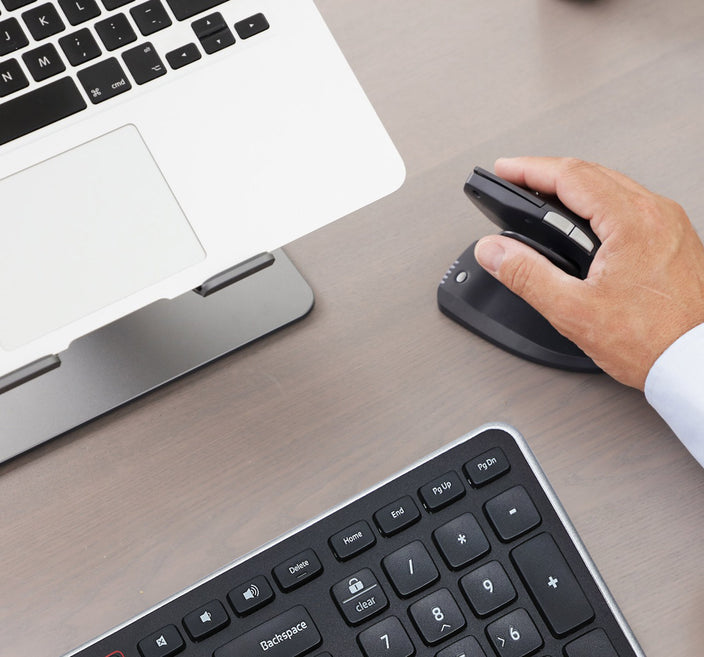Good ergonomics prevents illness and injuries to employees. Conversely, poor ergonomics contribute to high sick leave and work-related illness. As such, there is every reason to invest in ergonomic solutions for employees to reduce sick leave.
Sedentary office work often cause strains on specific muscles due to the high amount of monotonous movements. Increasing sedentary work has led muscle tension and pain in the neck and back to become public diseases, as people and companies have not focused on good ergonomics.
Read more: How a centred mouse can help you reduce sick leave
Nevertheless, you can reduce sick leave with the correct ergonomic tools, and employees can get more healthy work lives.
Customise your workstation
A good workstation design prevents and relieves pain. First and foremost, there should be enough space around you so that your colleagues can pass your desk without disturbing you – but also enough that you can quickly move around, and for example, push your chair aside when you stand up.
Next, your work tools must be in proper condition. Your mouse, keyboard, and screen should support your work, and your chair and table fit you. Your screen must be tilting, glare-free, and have a sound graphics card so that the image is sharp. A wireless keyboard provides more freedom in terms of working positions, and a good mouse should be light and precise to put minimal strain on your muscles.
Use a centred mouse to reduce sick leave
The mouse is one of the major culprits behind strain injuries. Most people who work on a computer have experienced pain related to the so-called “mouse arm”. In the worst cases, such pain will not just be confined to computer-related movements.
Read more: Benefits of a centred mouse
A centred mouse causes fewer mouse injuries as it puts less strain on the neck, shoulders, elbows and wrists as you work with small, light movements in front of the body – rather than next to the body, as is the case with a traditional mouse. In addition, the mouse placement in front of the keyboard encourages a better ergonomic working position.
You might also like: Everything you must know about taking sick leave in the UK.
Take breaks and move around
Humans are not meant to spend an entire day in on their behinds in front of a screen. Therefore, make sure you move around during the day – even when you are busy. It is all the more critical when you are busy because you are less aware of taking breaks and moving your body.
Most of us forget to use our height-adjustable tables to change our working position. Try to make it a habit to alternate between standing and sitting when you are working. Maybe you switch it up every time you go for a cup of coffee or when you come back from lunch.
Remember, breaks are also necessary. It's healthy to leave the screen and do something else – even if it's just a cup of coffee.
Use shortcut keys
It sounds simple, and it is. By using shortcut keys, you reduce muscle activity and thus strain, thereby sparing your body. Many do not think about the strain caused by a mouse click, but when we use a traditional mouse, we use muscles in both our forearm, hand, and neck.
Operating systems have shortcut keys, and so does different software and applications. In addition, you can create your shortcuts, so you remember them more easily.
It is a good investment in your own body to take some time to learn the shortcut keys – even if it is just a few common ones.
Movement as part of your daily schedule
Many of us can easily include more physical movement in our workday. You can take the stairs instead of the elevator, go for a walk while talking on the phone, walk over to your colleague instead of sending an email, etc.
But you can also include movement in your schedule by spending a few minutes a day doing elastic band exercises that relieve pain and soreness in your neck, shoulders and arms. That might even inspire others to join in.





